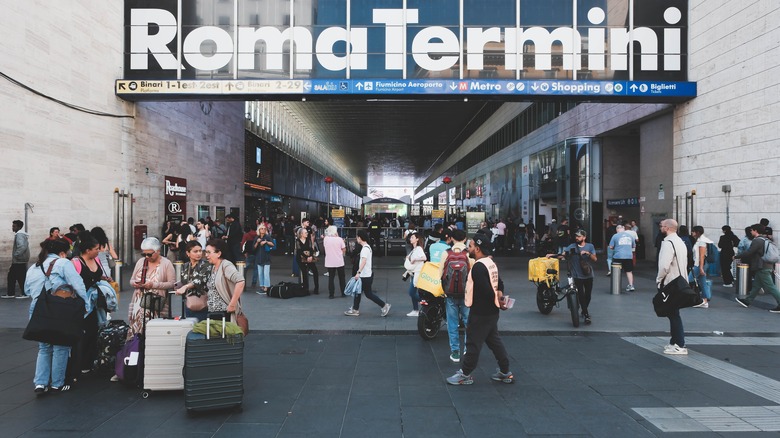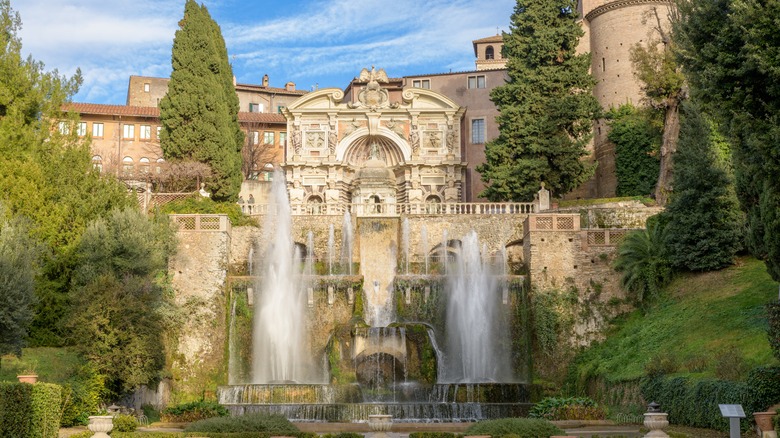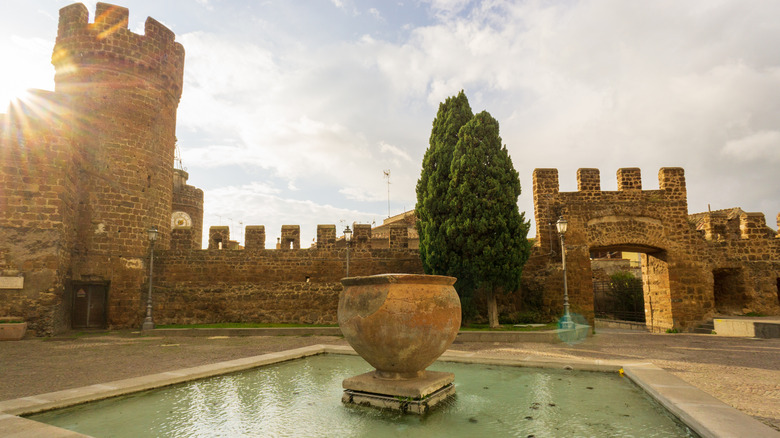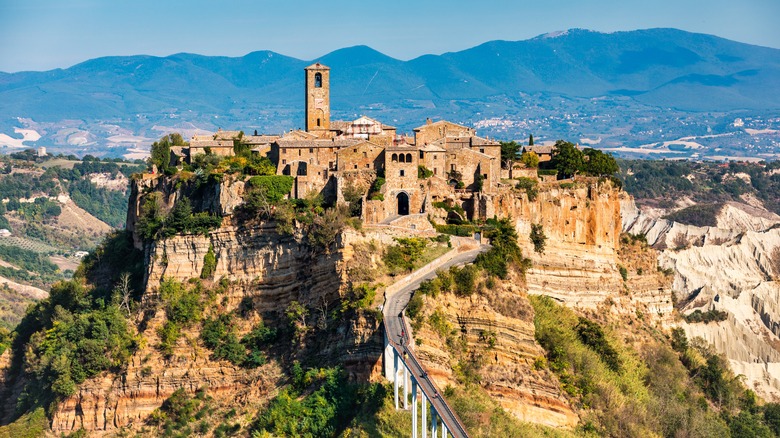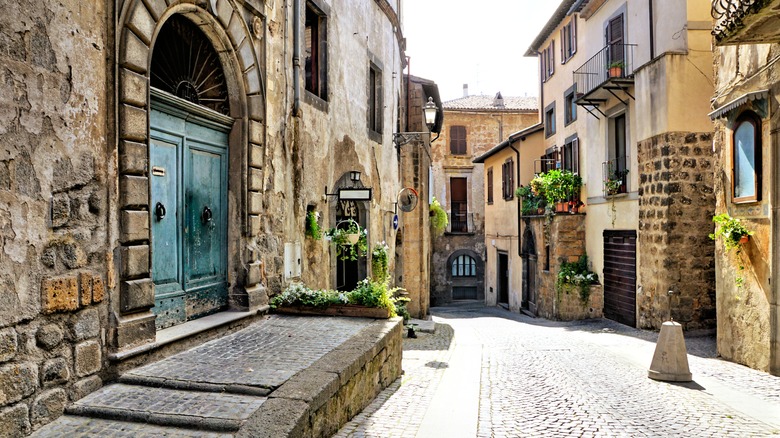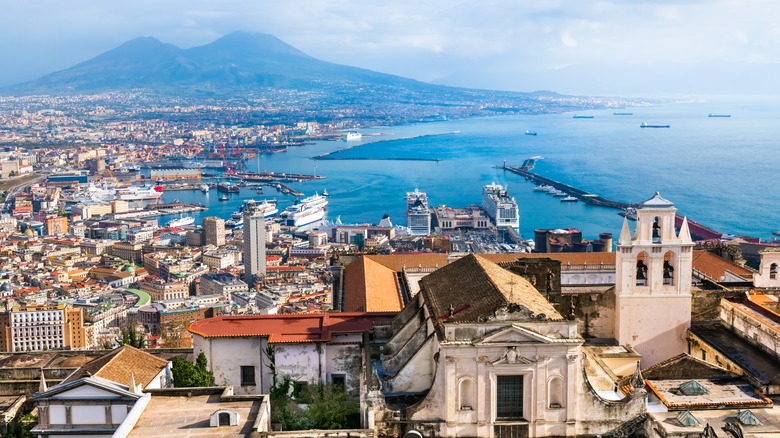5 Of The Best Destinations For A Day Trip From Rome By Train
Planning a trip to the Bel Paese can be stressful, given how much the iconic tourist destination offers visitors. As obvious as it sounds, however, Rome is truly the city to kick off your vacation in Italy. The city itself is a treasure trove of history, and culture, and gives you a good taste of all that awaits as you dive deeper into the country. However, there's no escaping the crushing tourist crowds and general urban chaos, which can get quite overwhelming after a few days. Fortunately, travel gems abound, and many of them are close enough to do day trips from the Italian capital.
While the phrase "Mussolini made the trains run on time" can be attributed to propaganda and is largely false, Italian trains are actually punctual and a great way to zip around the country while saving both time and money. There are several places you can quickly get to from Roma Termini, Rome's largest train station. Most of the destinations on this list can be reached in about an hour, and are a great way to get a breather in between visits to the Colosseum and the Pantheon. Of course, for a true getaway, consider a trip to Italy's forgotten region and explore its food, beaches, and villages.
Tivoli
You can get from Rome to Tivoli in under an hour and, if you find the right ticket, for under $5! While there are other destinations in this list that'll get you away from tourist crowds, this is something that Tivoli is particularly good for, given its proximity to Rome and all that it offers. Given its relatively small size, it is often overlooked amidst Italy's touristy monoliths. However, Tivoli is a deeply historic town that's well worth a visit. It is layered, with many visitors coming back to dig deeper into its fascinating history, which is also reflected in the hill town's architectural beauty.
Two villas, both UNESCO heritage sites, form the highlight for any first-time visitor to Tivoli. The first is the picturesque Villa d'Este, which is the former home of a Catholic cardinal. Set on a hillside, this sprawling complex is quintessentially Renaissance with its ornate fountains and gardens. The other site is Hadrian's Villa (a.k.a. Villa Adriana), which, fittingly for the reader, was the Roman Emperor Hadrian's retreat when he wanted a break from Rome. Now in ruins, it forms a wonderful contrast to the former complex, is no less ornate, and encompasses a fascinating and turbulent history. In between your visits to these two sites, make sure to enjoy walking through this ornate town, which is dotted with Renaissance architecture and has been a popular summer holiday spot since the days of ancient Rome.
Cerveteri
Another train ride that's under an hour from Rome and costs less than $5 gets you to the ancient town of Cerveteri (the name of the closest train station is Ladispoli-Cerveteri). It takes a lot to top Rome's historical sights, but Cerveteri might do just that. The area where the present-day town is located was important to the Etruscan civilization which can be dated back to the 8th century B.C.E. While much of it was destroyed by the Roman empire, the remnants of the Etruscan empire point to a flourishing civilization that deeply influenced Mediterranean culture. In Cerveteri, you can explore the Etruscan Necropolis, also known as the Necropoli della Banditaccia, which contains thousands of ancient tombs. You can also delve deeper into the ancient roots of Italian culture at the Cerveteri Museum.
The town's center has a Medieval charm and features the imposing Ruspoli Castle, which houses the museum, in the backdrop. Cerveteri is perfect for a day trip as you can explore all it has to offer in a day. There are more well-preserved tombs and another Etruscan necropolis in the nearby town of Tarquinia, which can also be combined with your visit to Cerveteri.
Viterbo
Sometimes called the City of Popes, Viterbo is about a 2-hour train ride from Rome and is another hidden gem with a lot of medieval history. However, this doesn't mean that you'll spend your visit to Viterbo hopping from one museum exhibit to another (though that is always an option). Instead, expect a town dripping with historic charm in almost every corner — you can even find accommodation in medieval buildings that have been converted to house modern apartments. Walk through the narrow, winding lanes and you will be pleasantly surprised by the lack of tourists, and even more so when you try the local cuisine that is simple, delicious, and uses seasonal produce.
There's more than enough to do in Viterbo for a day trip, so consider spending a night in this town. There are several ornate palaces to explore, a 12th-century cathedral where multiple popes were laid to rest (including one whose body's actual location is a mystery), and even the possibility to dip in the large thermal pool at Terme Dei Papi. If visit in September, you can attend the town's famous festival which features 100 porters carrying the enormous Macchina di Santa Rosa — a tower 30 meters (about 98 feet) in height and covered in flames. A tradition for over 750 years, the parade pays respect to the town's patron saint.
Orvieto
About an hour and a half by train from Rome is the hilltop town of Orvieto. The new section of the town, including the train station, is at the bottom of the hill, and a quick drive or slightly longer walk gets you to the top of the volcanic rock hill where the old town — the part of Orvieto truly worth exploring — lies. Once you delve into the old town's winding lanes, you'll be hard-pressed to run out of things to do. There are ancient churches and museums to visit, and even just walking around the medieval city center feels like you've gone back in time. Local handicraft shops and cafes line the streets, and you will spot quite a few tourists here during the day. Expect to see a crowd around Orvieto's cathedral, which features a strikingly ornate facade and a varied collection of paintings, stained glass, and sculptures in its interior.
Things are equally interesting underground as the city sits on a network of ancient caves. The cathedral isn't the only architectural marvel here, as you'll find if you take a guided tour of the caves that served as homes to the area's ancient residents. The food and drink are top-notch, as one would expect in most parts of Italy, and the area's local wines are especially popular. Depending on when you visit, you may be in time to catch one of the many traditional and modern events that the town hosts including the Umbria Jazz Winter Festival in December.
Naples
Italy's third largest city is just over an hour away by train from Rome and may not seem like the ideal getaway from Rome's crowds. However, dig into the many layers that make up the notoriously popular city of Naples and you might just find some of your most memorable Italian experiences. It's one of Europe's oldest cities, with a history that goes back to the first millennium B.C.E. and sits in the shadow of Mount Vesuvius. Having been home to multiple civilizations, this rich city is oozing with ornate architecture. Just walking around is a feast for the senses, and Naples' online reputation for being dirty and dangerous has actually helped keep tourist crowds at bay, making it a great Italian destination to explore.
To experience some of the calmer parts of Naples, head to Santa Chiara, which encompasses a monastery, tombs, and a basilica amidst picturesque gardens. The city also has a maze of ancient underground catacombs. Finally, you can head to the coast and enjoy Naples by the sea and stop by the famed "egg castle." Of course, the archeological museum is a goldmine for history buffs, and there is also Ipogeo dei Cristallini, a tomb from the Greek era that has been opened to the public relatively recently. Or you can just skip everything and find a quiet cobbled street with a traditional pizzeria and sink into some of the best pizza you've ever eaten.
